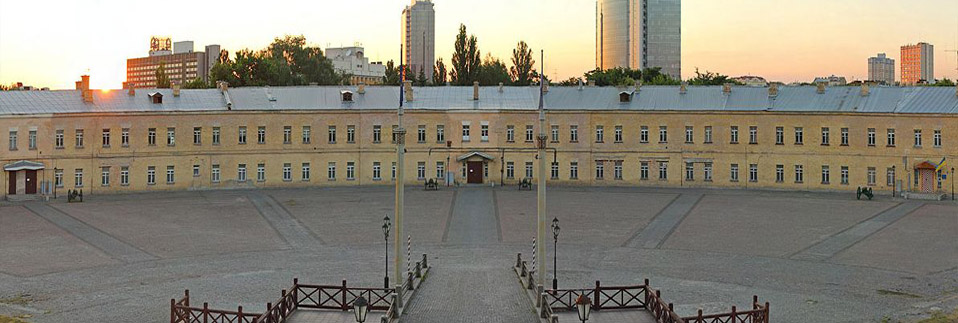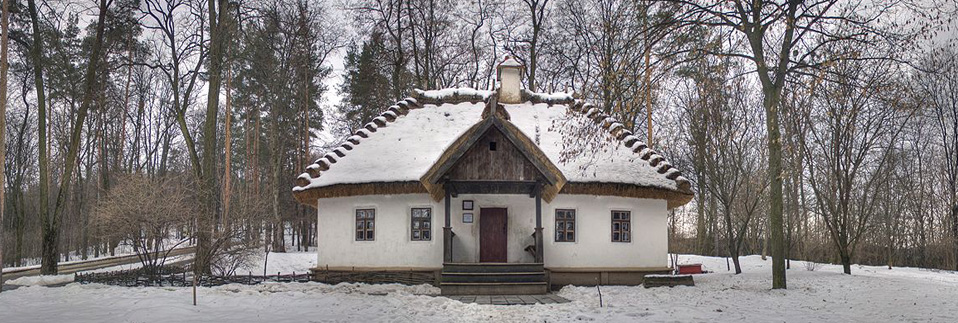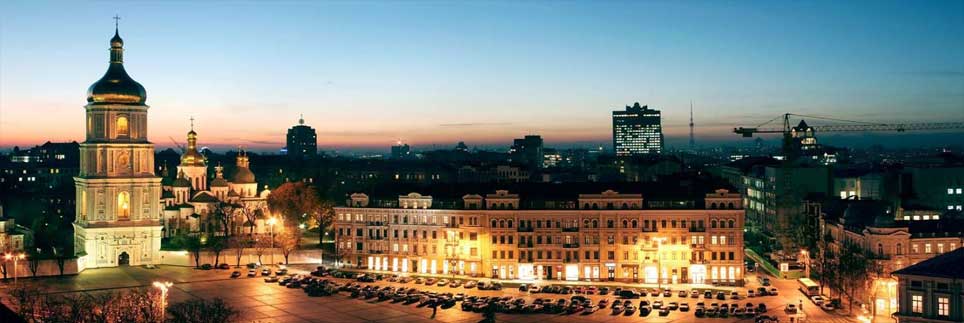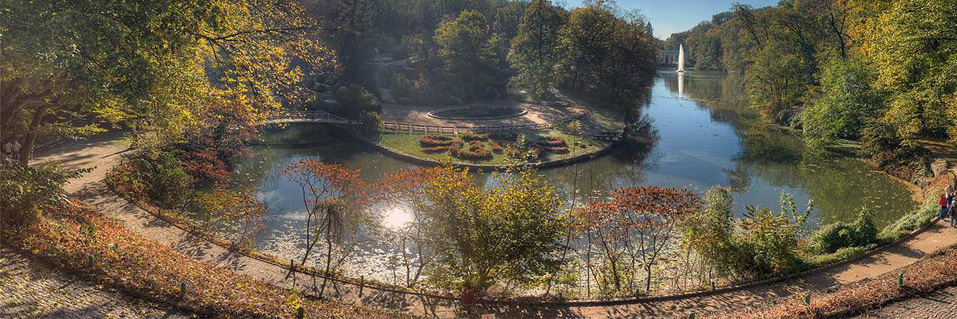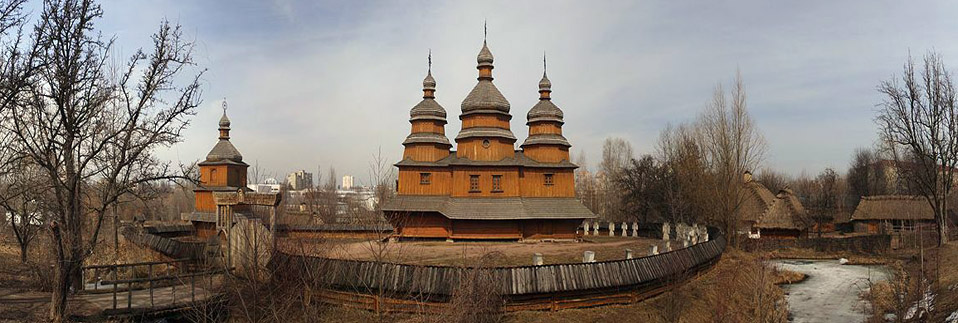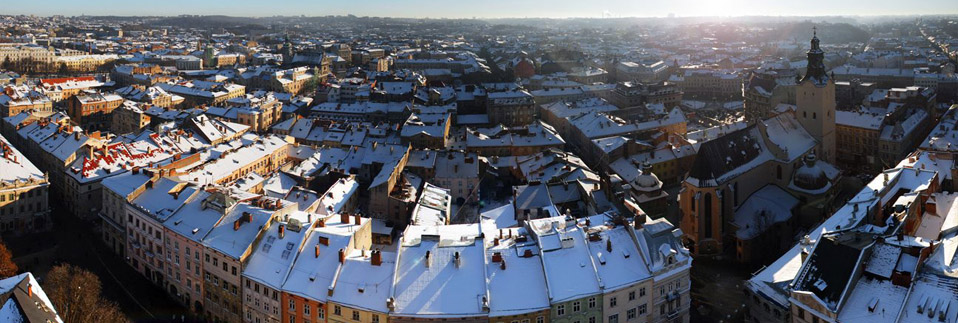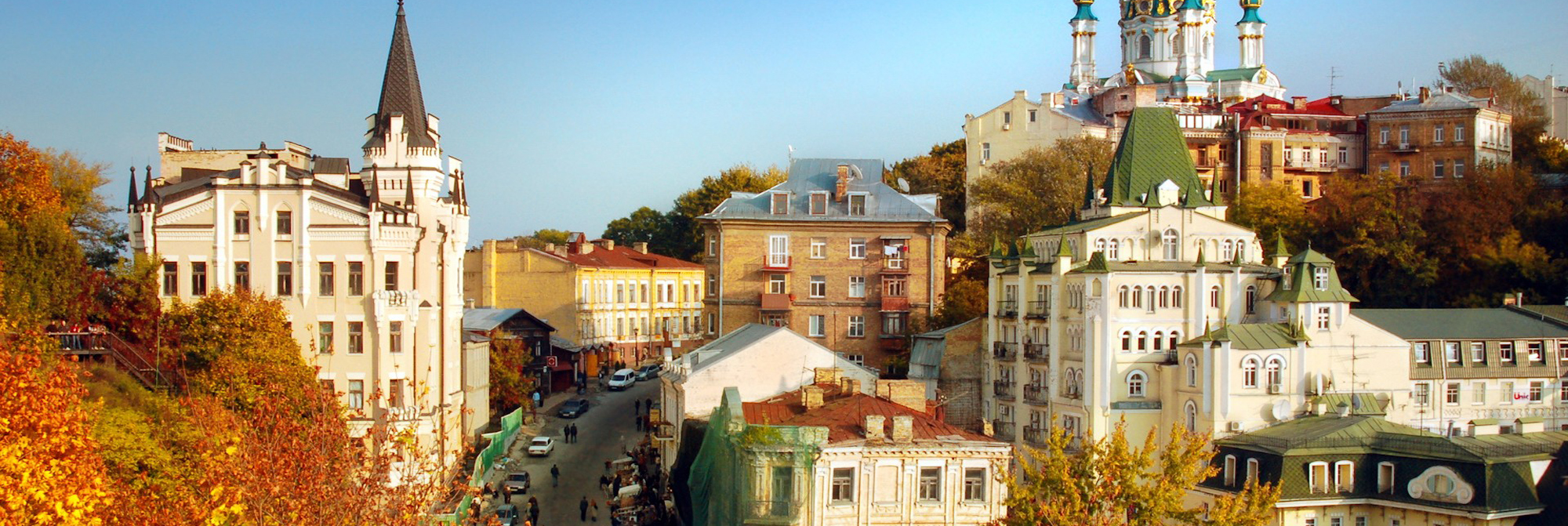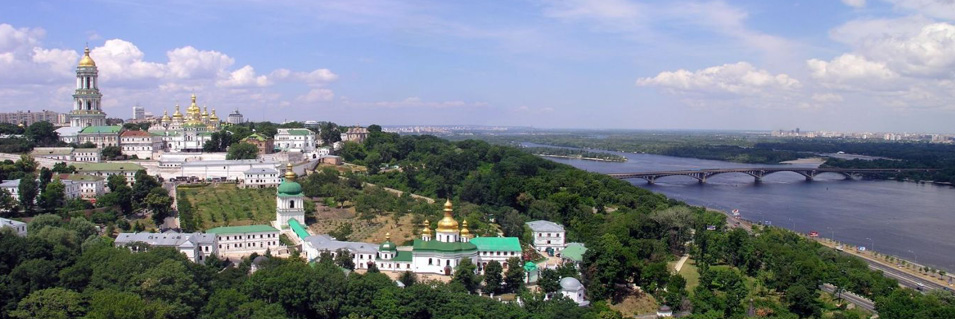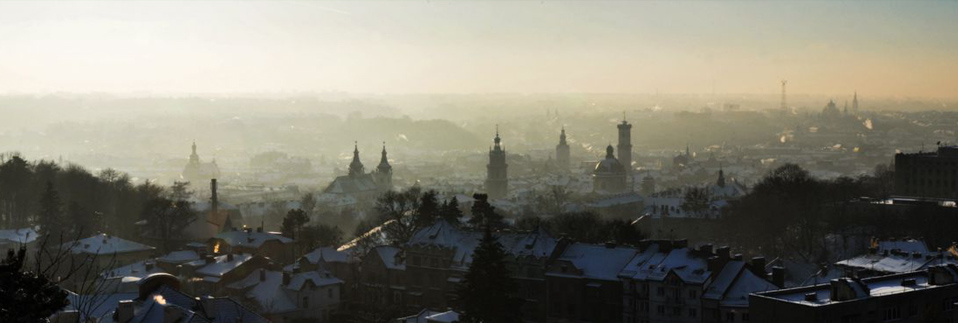Poltava
Poltava
 The city dates back to 1174. The 800-year history of the city is marked with many significant events. In the Northern War (1700-1721) Poltava withstood a two-month siege of the Swedes. In 1709 the Poltava Battle took place near the city. It greatly changed the destiny of Russia and Ukraine.
The city dates back to 1174. The 800-year history of the city is marked with many significant events. In the Northern War (1700-1721) Poltava withstood a two-month siege of the Swedes. In 1709 the Poltava Battle took place near the city. It greatly changed the destiny of Russia and Ukraine.
The creative work of such famous Ukrainian writers as M.Gogol, I.Kotlyarevsky, P.Myrny, V.Korolenko and legendary Marusia Churai is associated with the city.
To-day it is a regional centre with 350,000 inhabitants.
Churches, historical and architectural monuments worth to be visited:
- Bell Tower of the Assumption (Uspensky) Cathedral, 1774-1801, the first stone structure that was built in Poltava. In 1992 the cathedral was transferred to the Ukrainian Autocephalous Orthodox Church.
- Building of the Theological Seminary (1875-76). Simon Petlyura (1879-1925), the writer M.Nuayme (born in Lebanon, 1889-1988) and other well known personalities studied here. To-day it houses the Agricultural Institute.
- Theological school ("Bursa"), 1876. S.Petlyura graduated from this school as a top student. Today it houses the Fruit Culture Technical School.
- Building of the Institute for young noble girls. It was built in 1828-32 by the architect L.Charlemagne. During the 19th c. P.Hulak-Artemovsky, L.Borovykovsky and other famous Ukrainians gave lectures at the institute.
-
Krugla Ploshcha (Round Square). In 1804-11 some administrative buildings including a meeting place for noblemen, the offices of the governor-general and the main post office were built around the square.
In Poltava Region you can find such famous towns and villages as: - Velyki Sorochyntsi - old folk handicrafts centre (ceramics, weaving, embroidery).Traditional annual Sorochyntsi Fairs with folk craftsmen's participation and shows are organized in late August.
- Myrgorod - mostly known as a health resort with medicinal water and curative mud.
- Opishnya - one of the oldest and the most significant folk handicrafts centres in Ukraine (ceramics, weaving, embroidery) which became widely known in the 19th century.
 The museum was founded in 1891 on the initiative of an outstanding scientist professor V.Dokuchaev. The museum collection comprises 400,000 exhibits including archaeological finds and collection of coins, numerous samples of the Poltava folk embroidery, weaving, tapestry, Poltava "pysanky" (Easter eggs), ritual items dating from the 19th-20th c., works of antique and oriental arts.
The museum was founded in 1891 on the initiative of an outstanding scientist professor V.Dokuchaev. The museum collection comprises 400,000 exhibits including archaeological finds and collection of coins, numerous samples of the Poltava folk embroidery, weaving, tapestry, Poltava "pysanky" (Easter eggs), ritual items dating from the 19th-20th c., works of antique and oriental arts.
The building was constructed in 1903-08 in the Art Nouveau style for the provincial "zemstvo" (County council). The facade is embellished with the coats of arms of the county cities of the province and decorated with ceramics and majolica made in Myrhorod and Opishnya.
Address: 2, Lenin St.
 A small museum is located not far from the city on the grounds of the battle. The display features the tragic battle (summer of 1709) which took place near Poltava between the armies of the Ukrainian Hetman Ivan Mazepa and Swedish King Charles XII against the army of the Russian Tsar Peter I. The visitors can see two common graves - of the Russians and of the Swedes.
A small museum is located not far from the city on the grounds of the battle. The display features the tragic battle (summer of 1709) which took place near Poltava between the armies of the Ukrainian Hetman Ivan Mazepa and Swedish King Charles XII against the army of the Russian Tsar Peter I. The visitors can see two common graves - of the Russians and of the Swedes.
Address: 32, Shvedska Mohyla.


